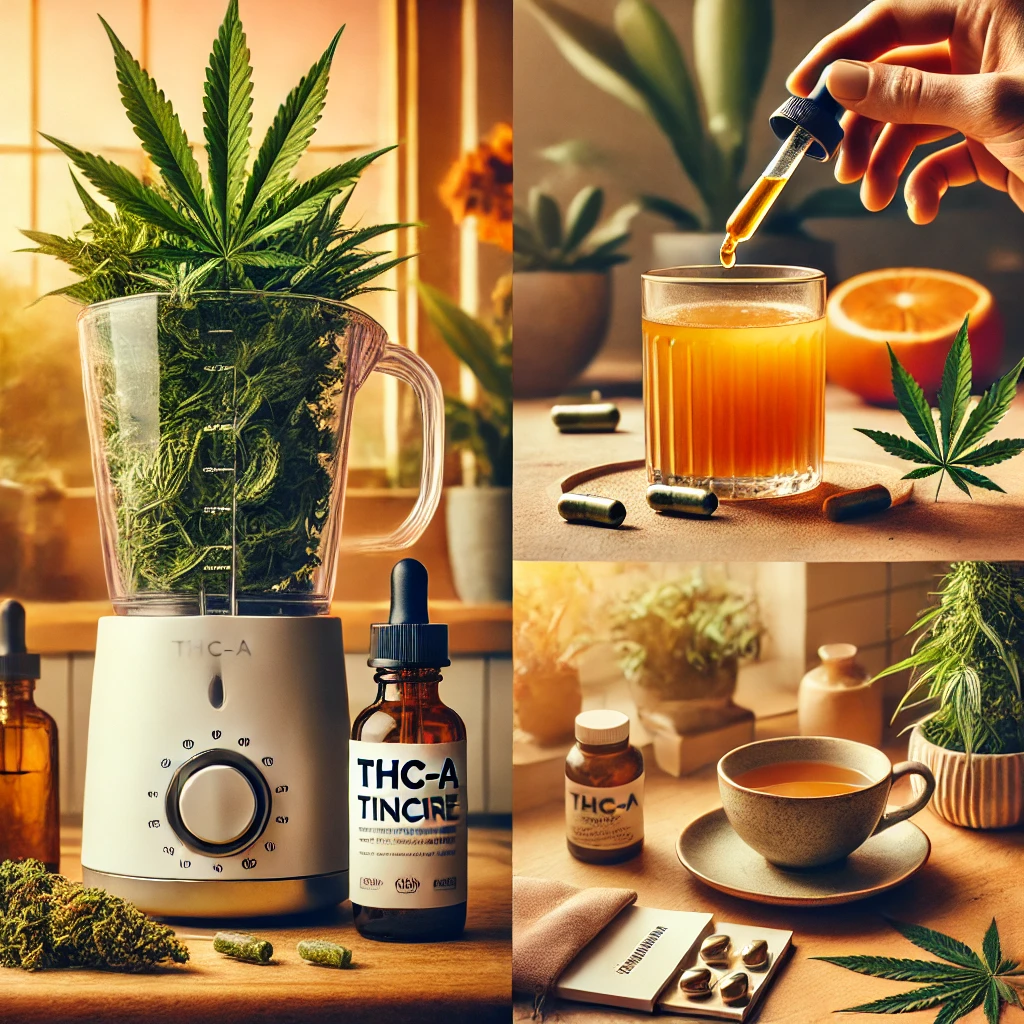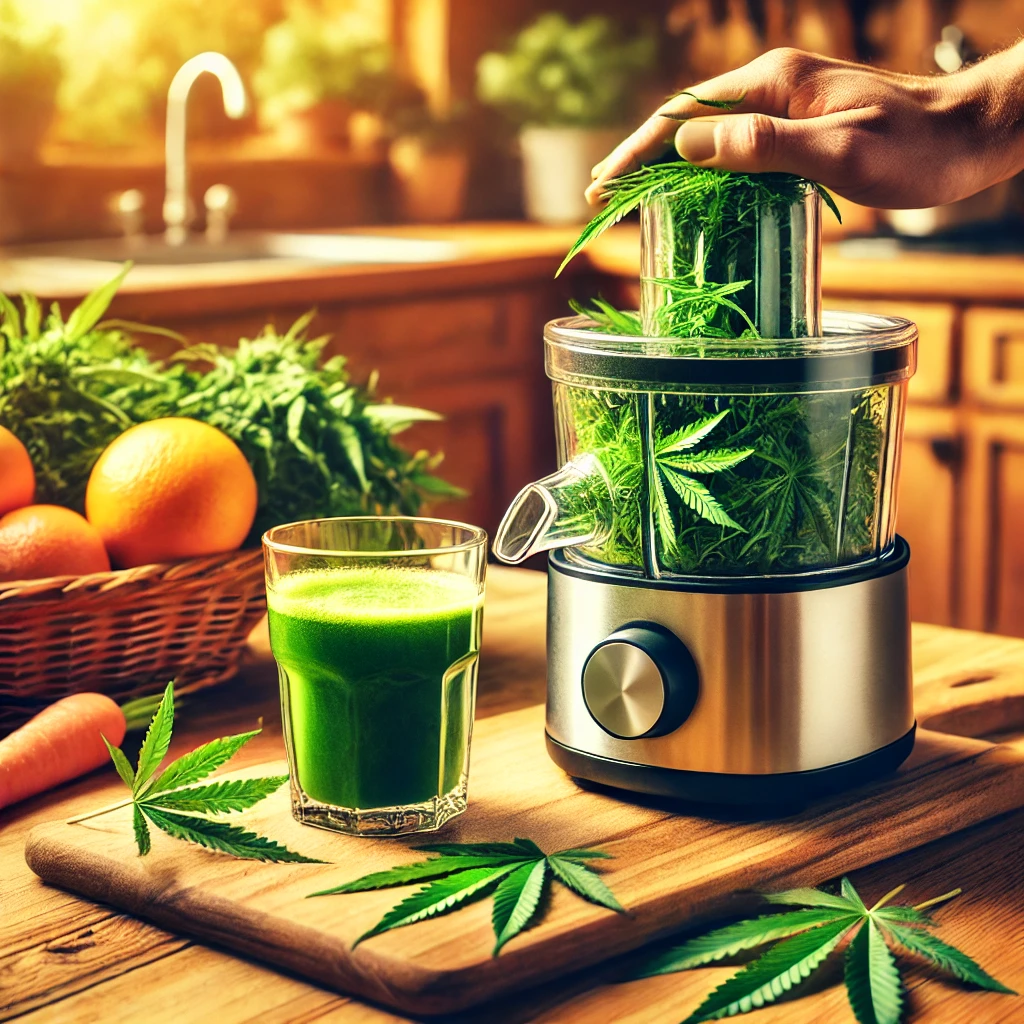THC-A is one of the most fascinating compounds in the cannabis plant that has many health benefits you should know about. You might already be familiar with THC (the compound that gives you that famous “high”), but THC-A, its raw precursor, is a whole different ballgame. And guess what? It comes with its own unique set of health benefits—no psychoactive effects required.
So, grab your favorite cup of tea and let’s dive into the top three health benefits of THC-A, along with some helpful insights into how you can enjoy its perks through different consumption methods.

If you’ve been dealing with chronic inflammation or conditions like arthritis, THC-A might just be your new best friend. Studies suggest that THC-A has strong anti-inflammatory properties that could help reduce pain and swelling without the psychoactive effects of THC.
I personally know friends who have added raw cannabis juice or tinctures containing THC-A to their routine to manage joint pain or post-workout soreness. The best part? Since it’s non-intoxicating, you can enjoy these benefits without feeling “buzzed.”
Brain health is something we all want to preserve, right? THC-A has shown promise in supporting neuroprotection, which means it may help guard against degenerative diseases like Alzheimer’s or Parkinson’s. While research is still emerging, the early findings are exciting.
I’ve even started incorporating THC-A into my wellness routine for this very reason. Whether it’s as part of a daily supplement or blended into a smoothie, it’s an easy way to give my brain a little extra love.

Feeling queasy or having trouble eating? THC-A has been reported to have anti-nausea effects, which could be a game-changer for people undergoing treatments like chemotherapy or dealing with conditions that affect appetite.
What’s cool is that THC-A can work its magic without making you feel too altered, so it’s a great option for daytime use when you need relief without distraction.
The way you consume THC-A can significantly influence how it benefits you. Here’s a handy chart to break it down:
| Consumption Method | How It’s Used | Primary Benefits |
|---|---|---|
| Raw Cannabis Juice | Freshly juiced raw cannabis leaves | Anti-inflammatory, neuroprotection |
| Tinctures | Sublingual drops | Convenient dosing, anti-inflammatory |
| Capsules | Oral consumption | Long-lasting effects, neuroprotection |
| Topicals | Applied to skin | Targeted relief for localized inflammation |
| Edibles | Made with non-decarboxylated THC-A | Slow release, anti-nausea benefits |

Now, let’s talk about the legal side of things because it’s important to stay informed. THC-A legality can be a little tricky. In many places, raw cannabis containing THC-A is not considered psychoactive and might fall into a legal gray area. However, when THC-A is heated (decarboxylated), it converts to THC, which is often tightly regulated or prohibited.
Here’s the bottom line: always check your local cannabis laws before purchasing or consuming products containing THC-A. In the U.S., states with medical or recreational cannabis programs typically allow access to THC-A-rich products, but it’s still worth confirming.
Personally, I’ve found that incorporating THC-A has made a noticeable difference in how I feel day-to-day. Whether it’s soothing post-exercise soreness or simply supporting my long-term brain health, it’s a versatile compound with so much to offer.
If you’re curious, start small and experiment with different methods to see what works best for you. And as always, consult with a healthcare professional if you’re considering using THC-A for specific health conditions.
Got any questions or personal experiences with THC-A? I’d love to hear them in the comments below. Let’s keep the conversation going!

Join our community of cannabis enthusiasts and terpene explorers! Get exclusive insights, in-depth guides, and the latest discoveries. No spam—just pure, aromatic knowledge delivered straight to your inbox.
Subscribe now and elevate your cannabis wisdom!